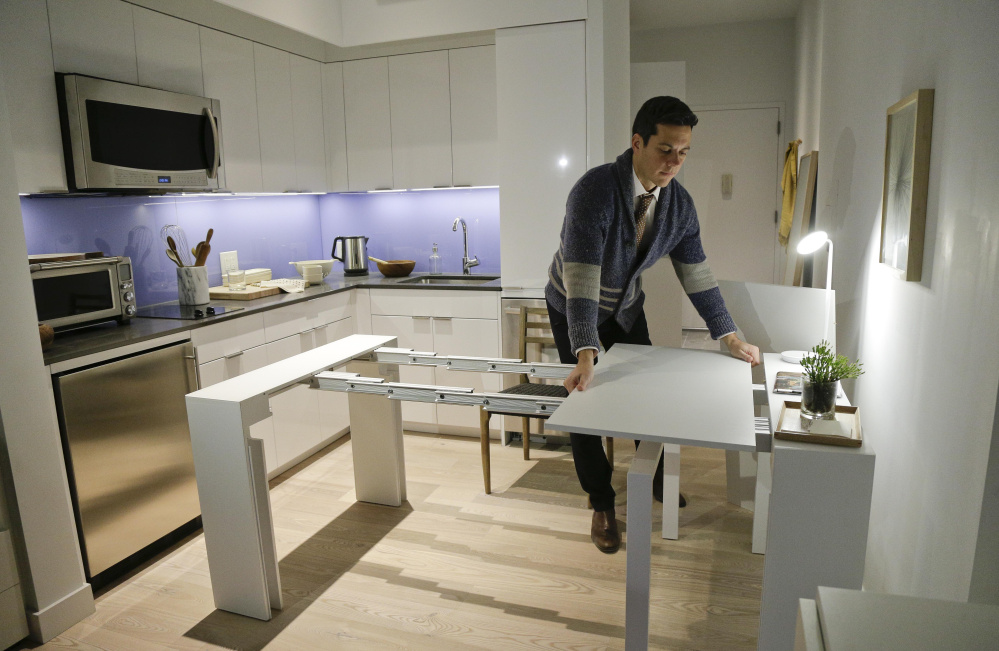NEW YORK — The apartments in a new Manhattan building boast little balconies, tall ceilings, dishwashers and storage space. All in 360 square feet or less.
It’s micro-living in the nation’s biggest city, and New Yorkers could be seeing more of it. Planning officials are proposing to end a limit on how small apartments can be, opening the door for more “micro-apartments” that advocates see as affordable adaptations to a growing population of single people. Critics question whether less space will really mean less expensive.
At Carmel Place, the Manhattan building that marks the city’s first experiment in decades with building super-small dwellings, the pitch is that little can be just enough. Due to open early next year, Carmel Place features 55 apartments ranging from 265 to 360 square feet.
As an experimental project, Carmel Place got city land and a waiver from New York’s 400-square-foot minimum on new apartments, set in 1987. A proposed elimination of that minimum would allow smaller studios in buildings with a mix of apartment sizes, but entire micro-unit buildings would continue to need waivers.
“For us, it was really important to demonstrate how small space could be an enhancement to quality of life,” said Christopher Bledsoe of Stage 3 Properties, which designed the interiors and amenities at Carmel Place.
Long, flat walls without columns maximize furniture-arranging options, although some units come furnished with fold-out wizardry, including a desk that expands into a 12-seater table and a retractable bed that pulls down tidily over a love seat. Developer Monadnock Construction and architecture firm nArchitects worked inch-by-inch – sometimes by eighth-inch – to meet such requirements as a wheelchair-accessible bathroom.
Forty percent of the units have rents set by affordable-housing programs topping out at around $1,500 a month, but market-rate ones rent for $2,650 to $3,150. About 20 people have applied and hundreds requested information for eight market-rate units so far, while over 60,000 have entered a lottery for the affordable ones.
Cities from San Francisco to Boston have OK’d some micro-apartments in recent years, seeking to address housing squeezes in a nation where 28 percent of households are people living alone, up from 13 percent in 1960.
Send questions/comments to the editors.



Success. Please wait for the page to reload. If the page does not reload within 5 seconds, please refresh the page.
Enter your email and password to access comments.
Hi, to comment on stories you must . This profile is in addition to your subscription and website login.
Already have a commenting profile? .
Invalid username/password.
Please check your email to confirm and complete your registration.
Only subscribers are eligible to post comments. Please subscribe or login first for digital access. Here’s why.
Use the form below to reset your password. When you've submitted your account email, we will send an email with a reset code.